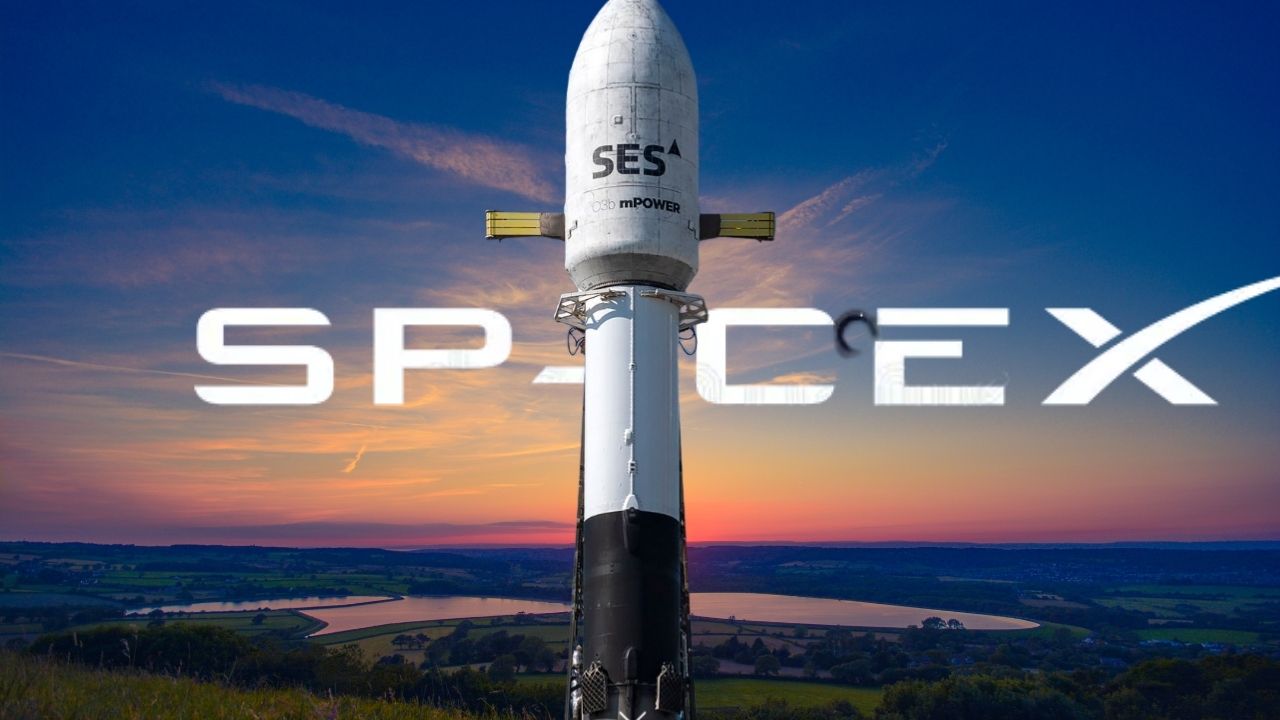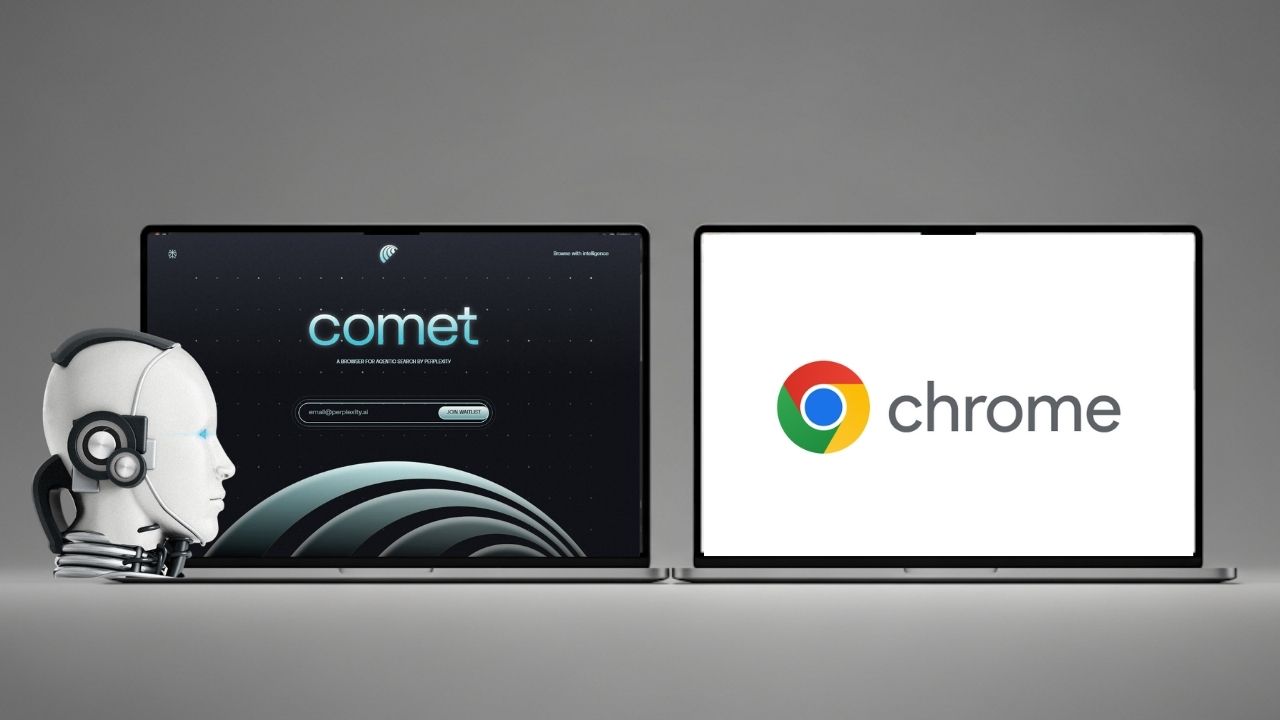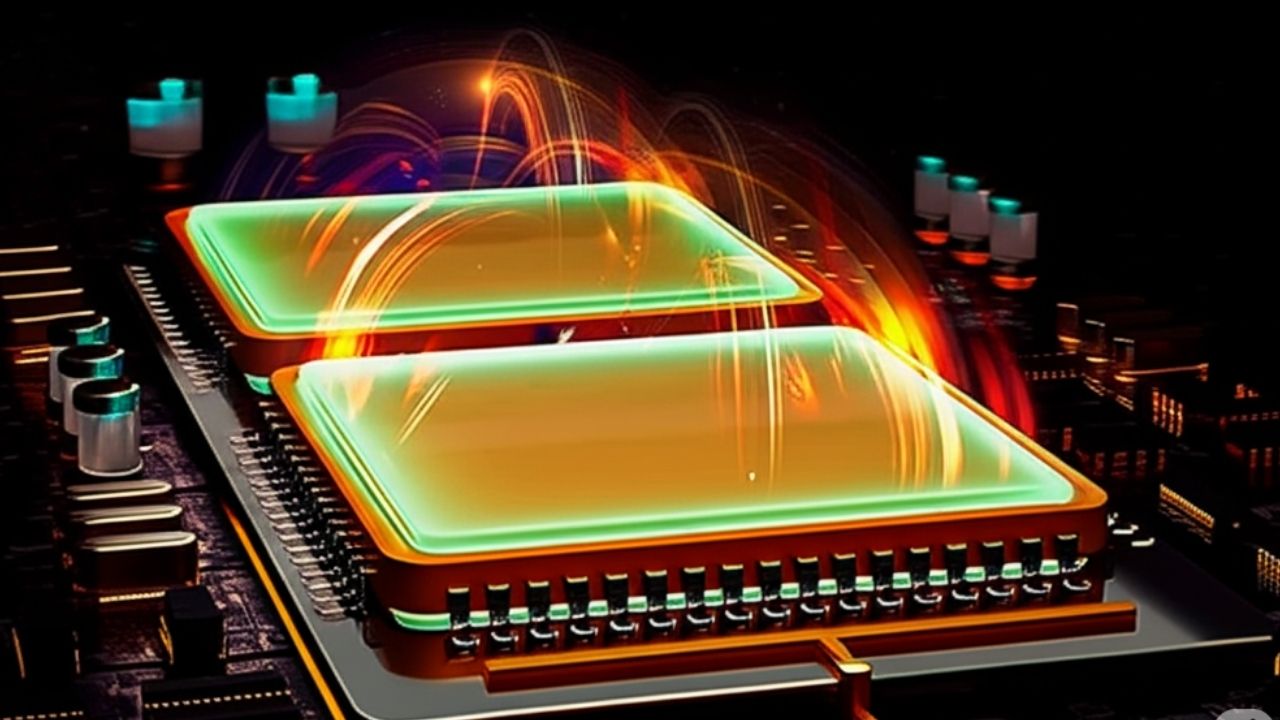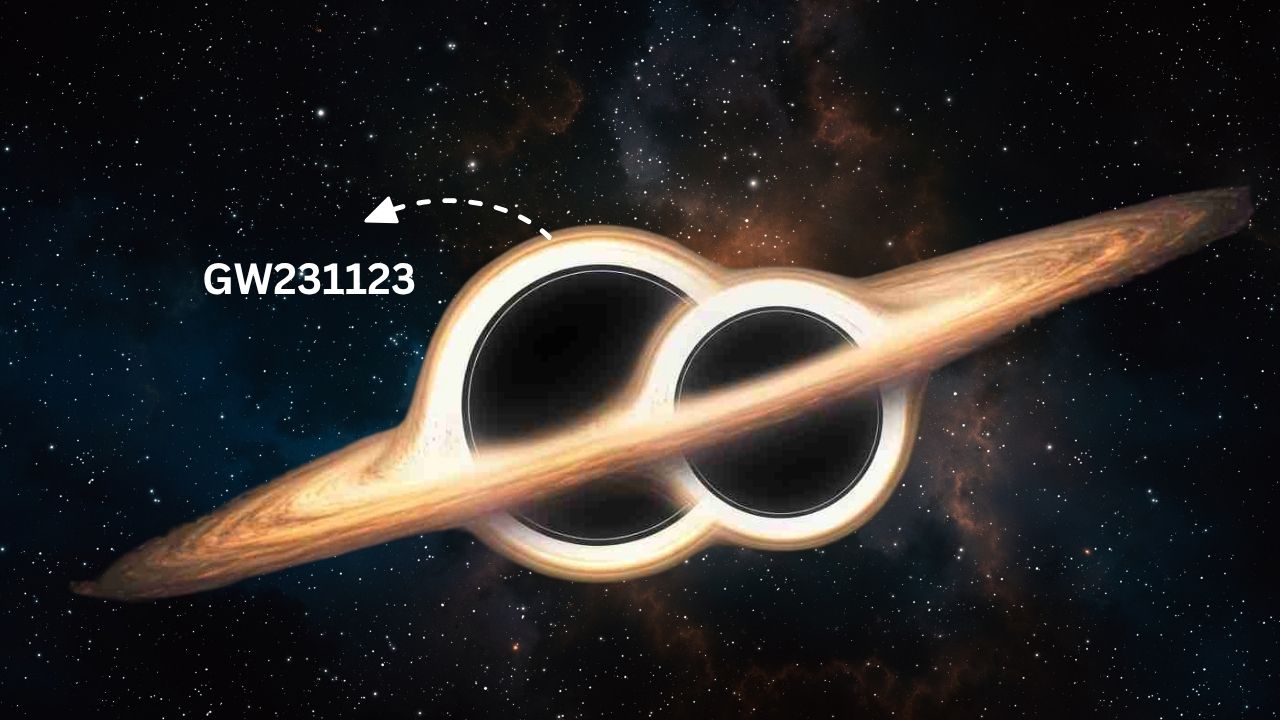In 2025, something almost imperceptible is happening to our planet: Earth is spinning faster. On July 9, July 22, and especially August 5, our days will be about 1.3 to 1.5 milliseconds shorter than the standard 24 hours—an all-time modern record. While you won’t notice this in daily life, it’s a big deal for science, technology, and the way we keep global time.
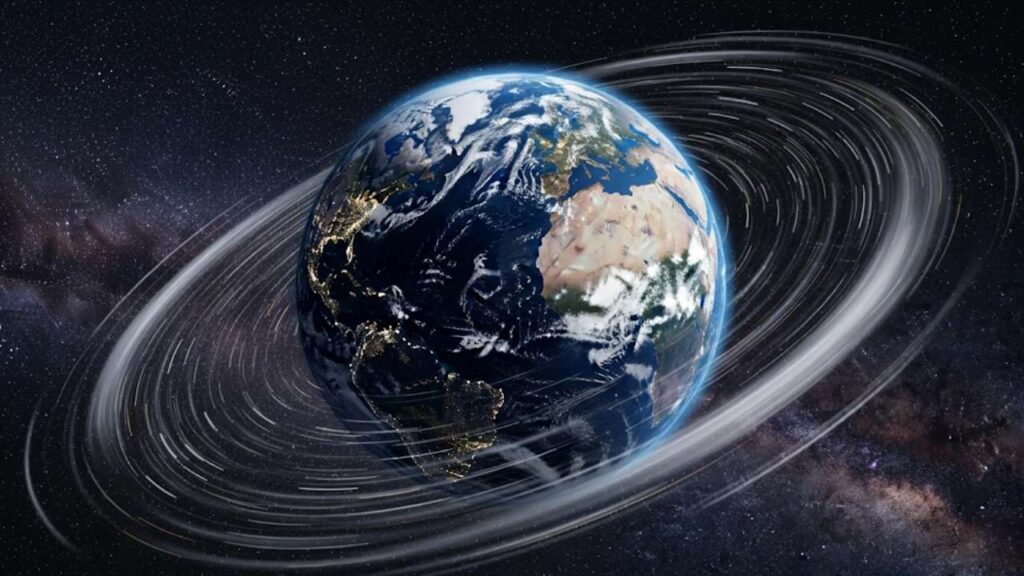
This article will explain why this is happening, who it affects, and what steps you—and experts—should take to stay informed and ahead.
Earth Is Spinning Faster Than Ever
| Key Point | Details | Professional/Career Impact |
|---|---|---|
| Fastest day on record (modern era) | July 5, 2024: 1.66 milliseconds shorter than 24 hours | Critical for global timing, navigation, and tech infrastructure |
| 2025’s predicted shortest days | July 9: ~1.30 ms; July 22: ~1.38 ms; Aug 5: ~1.51 ms shorter than 24 hours | Watch for official leap second announcements; prepare systems for potential leap second |
| Current trend reversal | Since 2020, days are getting shorter—reversing centuries of gradual lengthening | Ongoing research, model revision, and monitoring |
| Main suspected causes | Moon’s orbital position (July/Aug 2025), possible core-mantle angular momentum shifts | New opportunities in geophysics, climate science, and timekeeping |
| Potential leap second | If trend continues, a negative leap second (UTC−1s) may be needed—unprecedented in history | IT, finance, transport, and navigation sectors will need updates and advisories |
| Why it matters for professionals | Even tiny changes can disrupt GPS, satellites, financial markets, and critical infrastructure | Monitor IERS bulletins; ensure systems are leap-second resilient |
Earth’s spin is getting faster—at least for now. This tiny but measurable change is a reminder that our planet is always in motion, shaped by forces both outside (the Moon) and inside (Earth’s own core). While daily life continues unchanged, the implications for science, technology, and global infrastructure are real and ongoing. For students, professionals, and the simply curious, this is a chance to see science in action—and to marvel at a universe that’s always full of surprises.
Official, real-time data on Earth’s rotation and leap second announcements can be found at the International Earth Rotation and Reference Systems Service (IERS) Bulletins.
What’s Happening to Earth’s Spin? The Shortest Days in History
Earth’s rotation speed isn’t perfectly steady. Over millions of years, friction from ocean tides (mostly caused by the Moon’s gravity) has slowed Earth’s spin, adding about 2 milliseconds to the length of a day every century. But since 2020, that long-term trend has reversed: days are now getting shorter, not longer. In 2020, the record for the shortest day was 1.47 milliseconds under 24 hours. Each year since has brought a new record: 1.59 ms in 2022, 1.31 ms in 2023, and a modern record of 1.66 ms shorter on July 5, 2024.
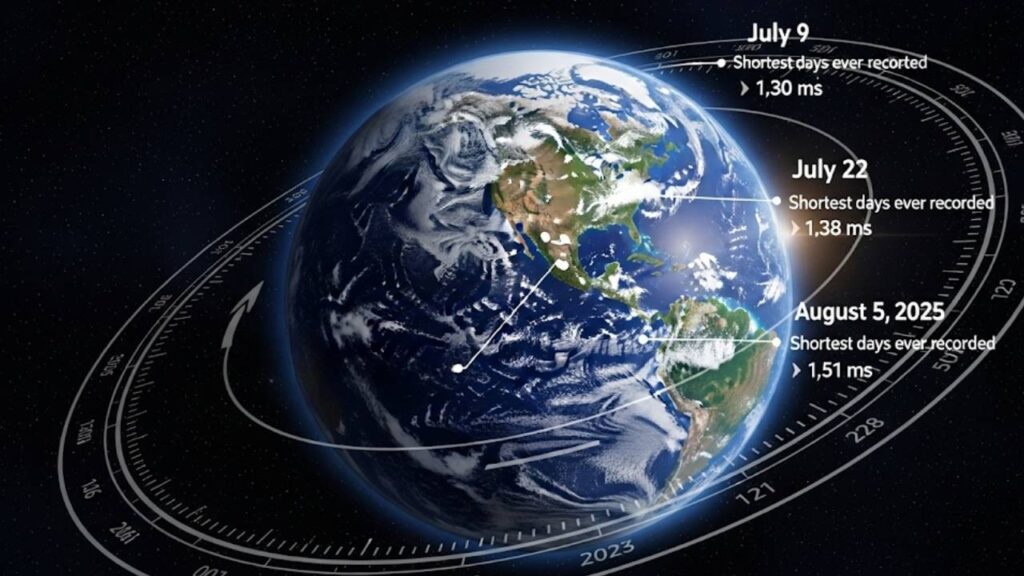
In 2025, scientists predict that July 9 (~1.30 ms), July 22 (~1.38 ms), and especially August 5 (~1.51 ms) will be among the shortest days ever recorded—possibly even faster than the 2024 record. While these changes are much too small for humans to feel, atomic clocks can measure them precisely.
Why Is Earth Spinning Faster? The Science Behind the Speed-Up
The Moon’s Shifting Pull
The Moon is the main driver of short-term changes in Earth’s spin. In July and August 2025, the Moon will be positioned farthest from Earth’s equator and closest to the poles. In this position, its gravitational pull acts like a gentle tug at the edge of a spinning top, giving Earth a tiny rotational boost—speeding up our planet for a few days each year. This is a normal part of the Moon’s 18.6-year cycle, but this time the effect is unusually strong, coinciding with other factors.
Deep Earth Dynamics: The Core Speeds Up the Crust?
Another possible cause is changes deep inside Earth’s core. The planet’s liquid outer core can sometimes slow down, transferring its angular momentum to the solid mantle and crust—like a figure skater pulling in their arms to spin faster. This “core-mantle coupling” is still incompletely understood, but it may account for some of the recent acceleration.
Current climate and ocean models do not fully explain the recent speed-up, even though melting ice and rising sea levels do redistribute mass across the planet. These factors usually slow Earth down, but some studies suggest they may be moderating—not causing—the current acceleration.
Long-Term Trends vs. Recent Acceleration
For billions of years, Earth’s days have slowly lengthened. Dinosaurs experienced 23.5-hour days; in the future, days will be even longer. But right now, we’re in a rare period where days are briefly getting shorter, thanks to this complex interplay of celestial mechanics and deep Earth processes.
How Is Earth’s Spin Measured? The Role of Atomic Clocks
Earth’s rotation is tracked using atomic clocks, which count the vibrations of atoms (usually cesium or rubidium) to keep time with incredible precision. The official global time standard, Coordinated Universal Time (UTC), is based on atomic time, not Earth’s rotation.
But since Earth’s rotation isn’t perfectly steady, UTC is occasionally adjusted by adding a “leap second” to keep it in sync with Earth’s actual rotation (Universal Time 1, or UT1). Since the 1970s, only positive leap seconds (adding one second) have ever been needed. If the current acceleration continues, we may soon need to subtract a second—a “negative leap second”—for the first time in history.
What Does This Mean for Everyday Life? Practically, Nothing— and Everything
For Most People: No Effect on Daily Life
Don’t worry—your daily routines, family time, or favorite activities won’t change. A millisecond is a thousandth of a second, far too small to affect sunrise, sunset, or clocks on your phone. Life continues as normal, and you can still enjoy the longest days of the year in July and August—just a tiny fraction shorter than before.
For Technology and Science: Big Implications
Global infrastructure relies on precise timing. GPS satellites, financial markets, power grids, and even the internet depend on clocks synchronized to within microseconds. A leap second—positive or negative—can cause glitches in software not designed to handle the change. For example, in 2012, when a leap second was added, some websites crashed, and airline reservation systems stalled.
A negative leap second would be a first, and the tech world is watching closely. If the trend holds, by 2029, timekeepers may need to subtract a second from global clocks—an unprecedented event that could cause unexpected problems for systems that expect only positive leap seconds.
For Scientists: A New Frontier in Geophysics
This acceleration is a genuine scientific puzzle. The main suspects—the Moon’s position, core-mantle dynamics, and climate-driven mass shifts—still don’t fully explain the recent speed-up. Leading experts say the cause remains a mystery and are calling for more research. This is the kind of real-world riddle that can shape entire careers—in astronomy, geophysics, or climate science.
What Should You Do? Practical Steps for Everyone
- If you’re a parent or teacher, use this as a fun, real-world science lesson. Compare Earth’s spin to a spinning skateboard or top: tiny changes can make it speed up or slow down.
- If you work in tech, finance, or navigation, bookmark the IERS Bulletins and watch for official leap second announcements. Make sure your systems can handle a negative leap second, should one be announced.
- If you’re a student, consider a career in Earth science, physics, or engineering. We live in an age of space exploration and climate change—there’s never been a better time to ask big questions about our planet.
- If you’re just curious, enjoy the fact that you’re alive during a rare and fascinating moment in Earth’s history. The planet you live on is a dynamic, ever-changing place—and science is still learning just how amazing it really is.
Earth’s Core Just Got Even Weirder—New Data Reveals Hidden Layers of Mystery
China’s Tianwen-2 Returns Earth, Moon Images as Land Team Simulates Lunar Lava Cave Probe
FAQs About Earth Is Spinning Faster Than Ever
Q: Will I notice that the day is a millisecond shorter?
A: No, the difference is far too small for humans to perceive. Your daily activities and routines will not be affected.
Q: Why is the Moon’s position important?
A: The Moon’s gravity normally slows Earth down, but when it is positioned farthest from the equator and closer to the poles, it can briefly speed Earth up—like a gentle nudge on a spinning top.
Q: Does climate change cause Earth to spin faster?
A: Melting ice and rising sea levels generally slow Earth down, but some research suggests they may be moderating—not causing—the recent acceleration. The main driver appears to be celestial mechanics and possibly deep Earth dynamics.
Q: What happens if we need a negative leap second?
A: Timekeepers would subtract one second from Coordinated Universal Time (UTC) to keep atomic clocks in sync with Earth’s actual rotation. This is unprecedented and could affect technology and navigation systems that aren’t prepared for it.
Q: Where can I get the latest official data?
A: The International Earth Rotation and Reference Systems Service (IERS) publishes official bulletins and leap second announcements. For the most reliable, up-to-date information, check their website.
Q: Is this something scientists expected?
A: No. The recent acceleration has taken many experts by surprise. While scientists knew the Moon’s position could affect Earth’s spin, the magnitude and persistence of the current speed-up is still not fully understood.


